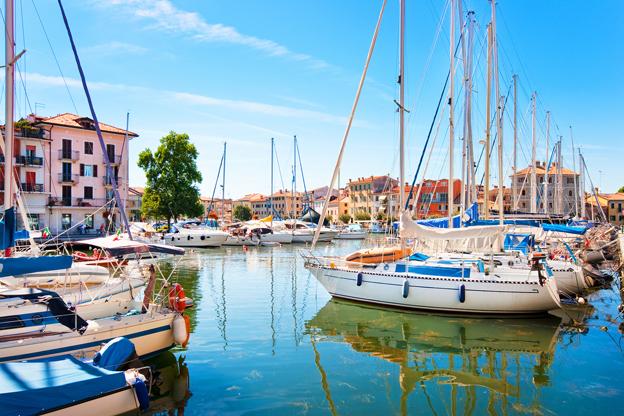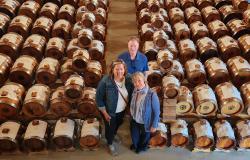Smaller than Venice, but with its fair share of charm and history, Grado is Friuli Venezia Giulia’s lagoon city, a town with 1600 years of history, which can still be experienced by strolling the calli (streets) of the ancient city center.
Located in the midst of the Adriatic’s northernmost lagoons, in Roman times, Grado was the first port of entry for ships headed upstream to nearby Aquileia, a powerful Roman city on the river Natisone. The stories of the two cities were long intertwined: during the last years of the Western Roman Empire, many Aquileia residents relocated to Grado to escape the barbarian invasions coming from the east. Even Nicetas, the Bishop of Aquileia, found refuge in Grado in 452. The construction of Santa Maria delle Grazie, one of Grado’s main sights, dates to this period. In 568, after the Lombards’ invasion, the seat of the Patriarchate of Aquileia was transferred to Grado.
In 1451, the seat of the patriarchate was transferred to Venice by Pope Nicholas V. Grado gradually lost importance. It became part of Austria in 1815, and remained so until 1918, when it was ceded to Italy after World War I.
Another major sight is Grado’s Cathedral, the Paleochristian Basilica of Sant’Eufemia, with its octagonal Baptistry, built in the late 5th century. Peek inside to admire the mosaic pavement from the 6th century.
Besides the historic aspects, Grado is also a popular summer destination, thanks to its lagoon, which extends over 90 square kilometers and includes two natural reserves to protect the area’s biodiversity.
Sandy beaches, clean and calm waters, and several entertainment activities make Grado an ideal family destination. Grado has been awarded the prestigious eco-label ‘Blue Flag’ for 27 straight years.
Grado has a very nice, pedestrian-only center, which comes alive at night with locals (and tourists in the high season) thanks to the many bars and restaurants where to enjoy the local wines and a seafood-based meal.
A fun way to explore the Grado lagoon is by going on a boat excursion. For example, you can visit the Barbana Sanctuary, located on a small island, where the original church dates from the 6th century.





